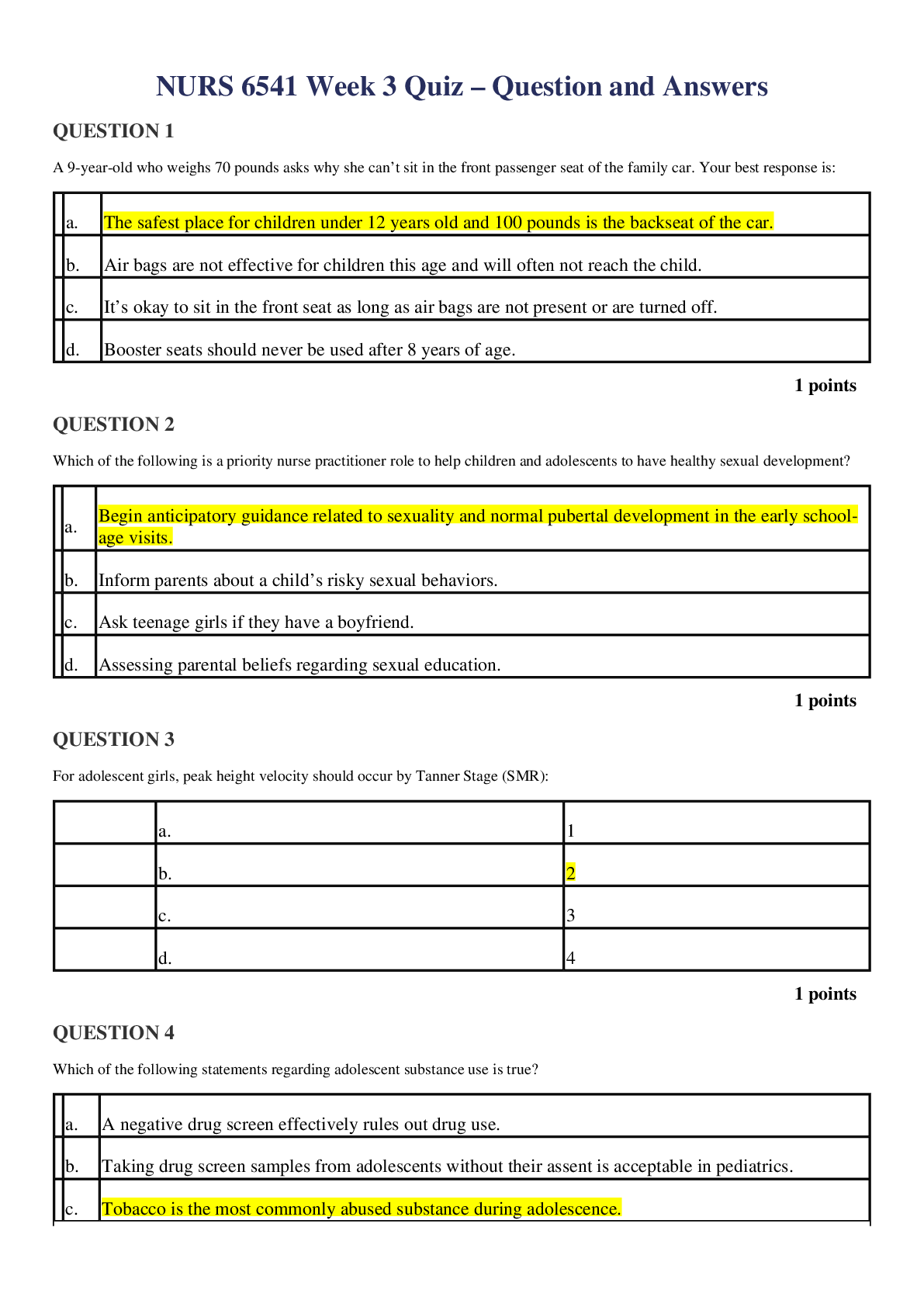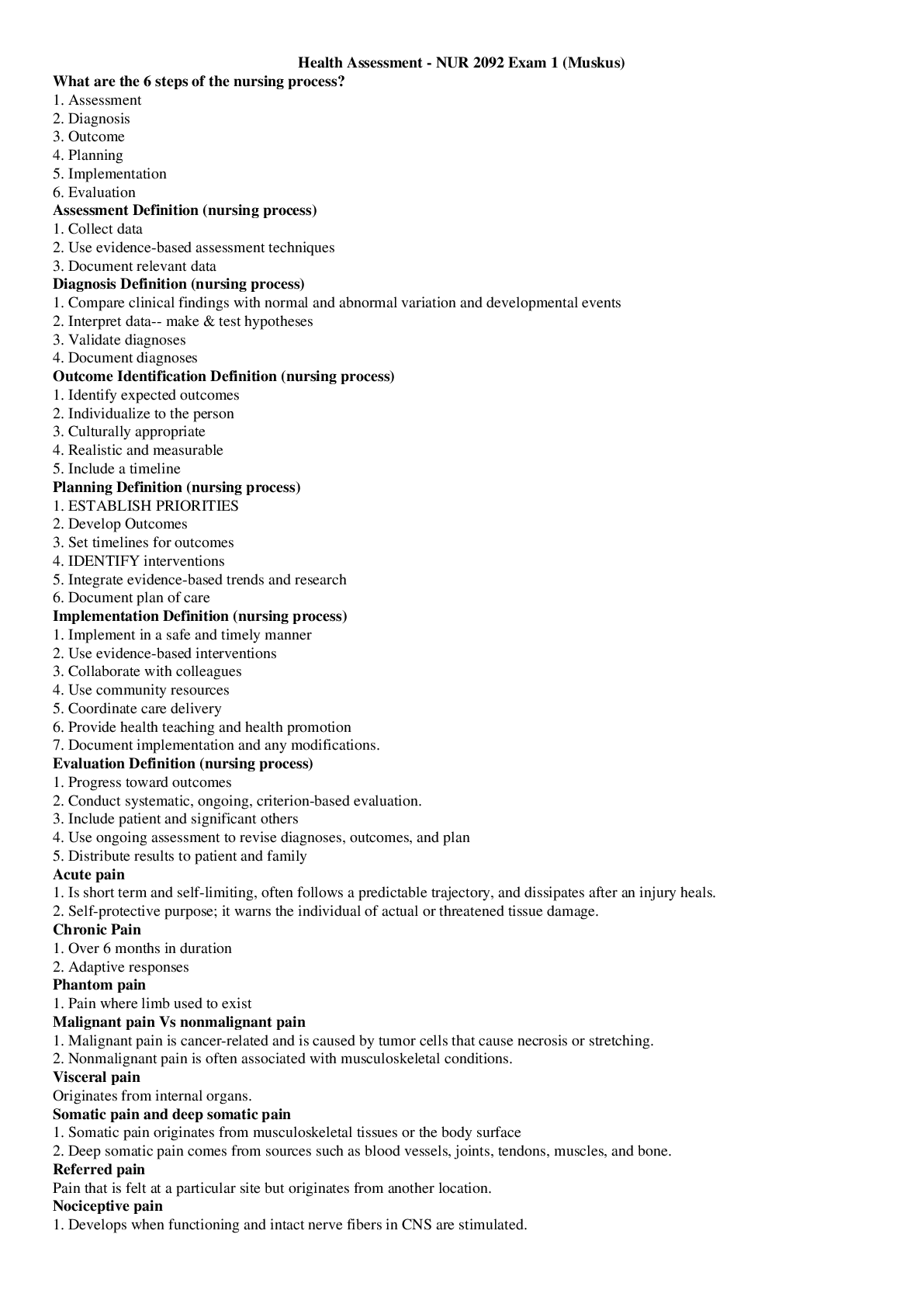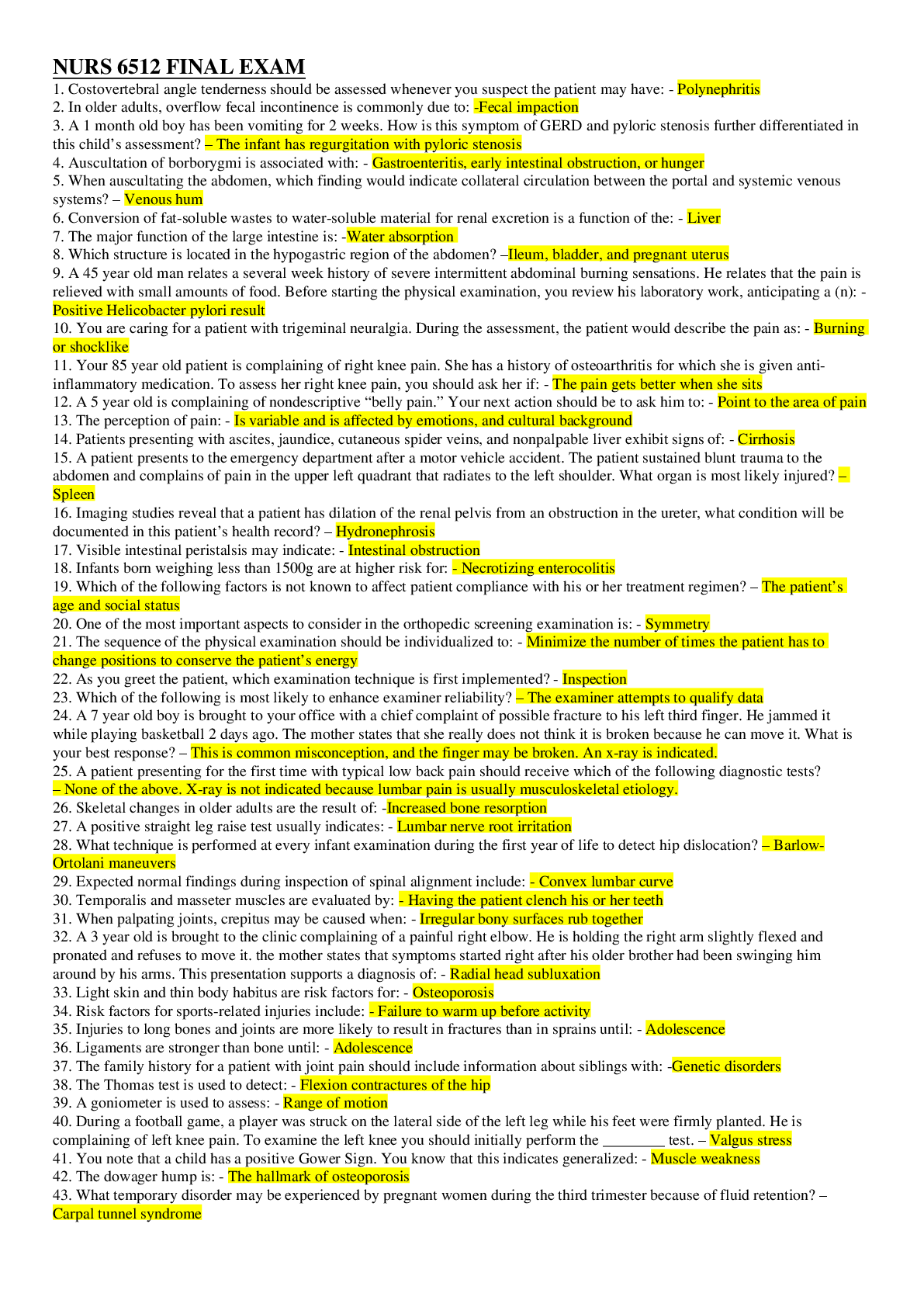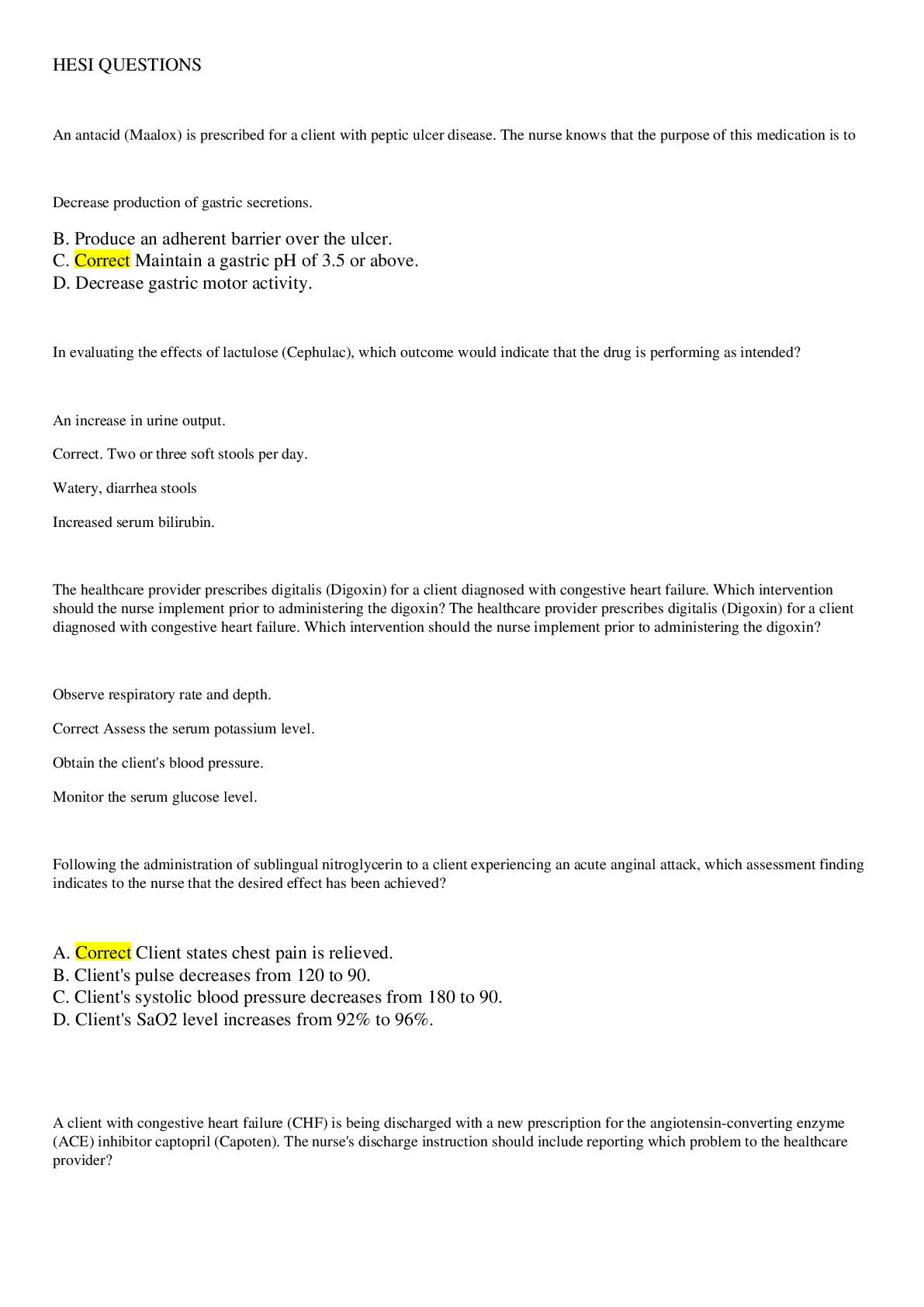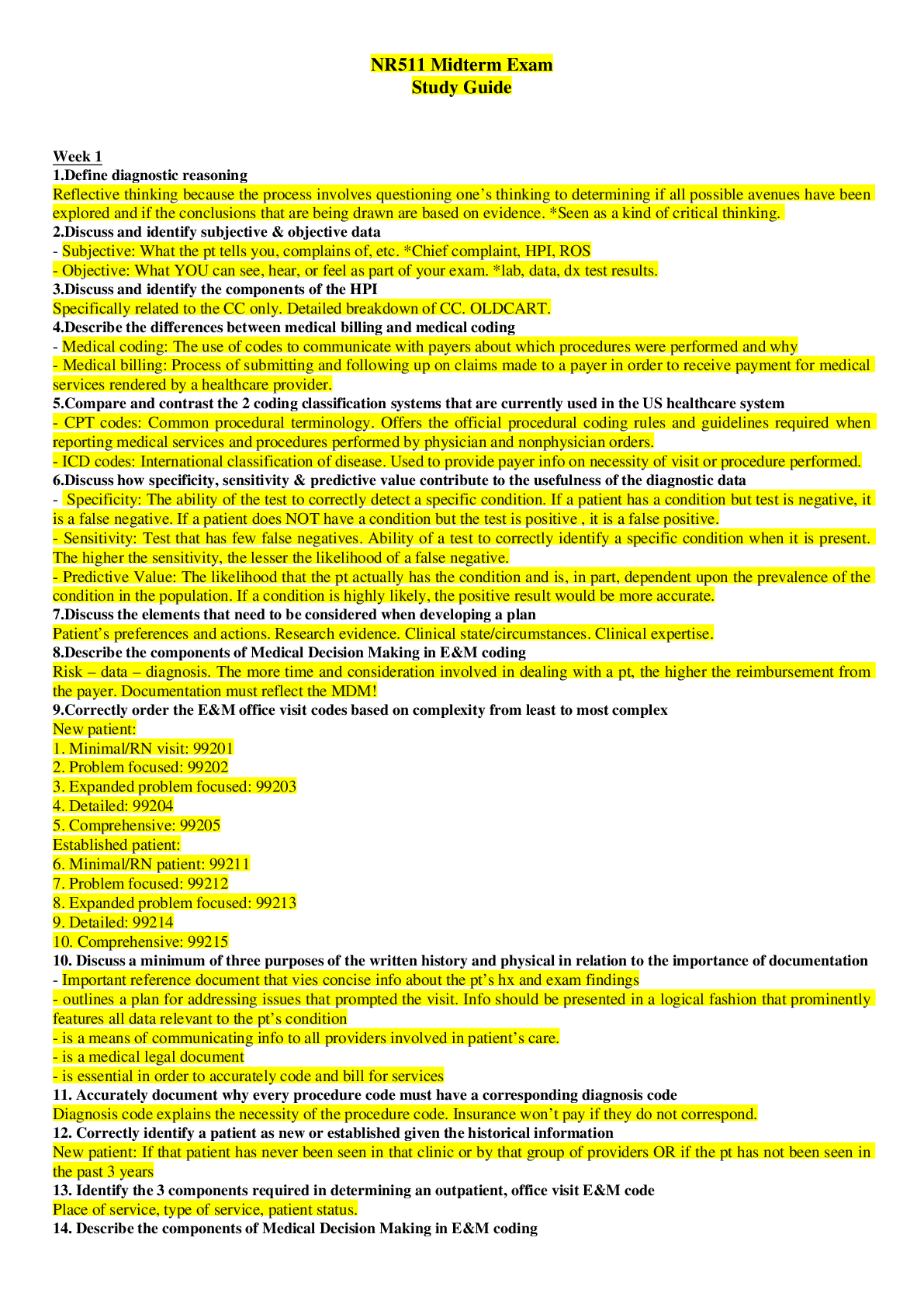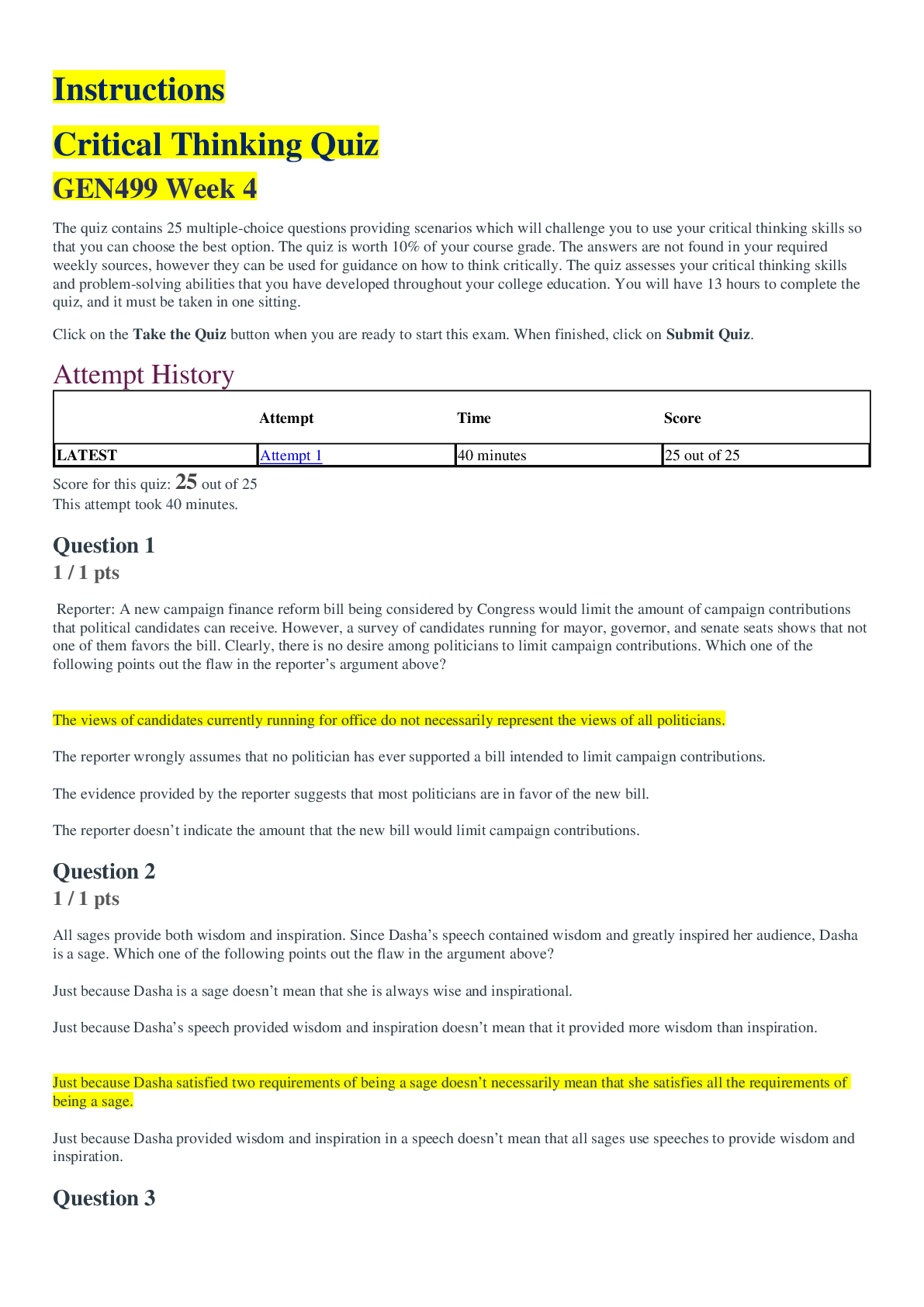Biology > EXAM > BIO 202L Lab 11 The Circulatory System (Femoral artery, pulmonary artery) | TOP SCORE | Download To (All)
BIO 202L Lab 11 The Circulatory System (Femoral artery, pulmonary artery) | TOP SCORE | Download To Score An A
Document Content and Description Below
Student Name: Click here to enter text. Access Code (located on the lid of your lab kit): Pre-Lab Questions: 1. Describe the pathway of blood traveling through the closed system of the circulat... ory system starting with the right atrium. The pathway of blood is arrange in number order; 1.right atrium 2. right ventricle 3. pulmonary artery 4. lungs 5. pulmonary veins 6. left atrium 7. left ventricle 8. aorta 9. arteries 10. arterioles 11. capillaries 12.venules 13. veins 14. vena cava 15. ending back where it started in the right atrium Alternatively, you may also draw a map of blood traveling through the closed circulatory system and insert it below 2. What are the main resistance vessels of the circulatory system? How are they controlled? Arterioles and they are controlled by vasoconstriction and vasodilation. Experiment 1: Microscopic Examination of Blood Vessels Post-Lab Questions 1. Label each of the items in the following slide pictures based on your observations. A- Tunica Adventitia B- Tunica Intima C- Tunica Media D- Lipids E- Tunica Intima F- Tunica Adventitia G- Tunica Media 2. What differences did you observe in the structure of an artery versus the structure of a vein? Artery walls are thick. Arteries does not have any valves. Arteries seem to move in a stream as if there was a burst of speed. Arteries appear to look red. Veins walls are thin. Able to see the veins valves. Veins seem to move sluggish or slow. Veins are usually blue, however, they appear to be darker color due to the pcture being 100X zoomed in. 3. Explain the direction of blood flow and the type of blood (oxygenated or deoxygenated) found in each vessel in the pulmonary and systemic circuits. Vessel Direction State of Blood Artery Away from the heart Oxygenated Arteriole Away from the heart Oxygenated Pulmonary Artery Both directions (left the heart, Deoxygenated heading to the lungs and then reenter the heart again.) Capillary Both (blood exchanges gases back and forth) Both Venule Towards the heart Deoxygenated Vein Towards the heart Deoxygenated Pulmonary Vein Towards the heart Oxygenated 4. Which vessels allow diffusion of oxygen and nutrients across their cell layers? Capillaries 5. List the vessels in order of ascending pressure within the circulatory system. They are arrange as follows: 1. Arteries 2. Arterioles 3. Capillaries 4. Venules 5. veins Experiment 2: Virtual Model – The Circulatory System Insert screenshot of the descending aorta: Insert screenshot of the brachial veins: Insert screenshot of the femoral artery: Post-Lab Questions 1. In what body region does the aorta originate? Heart region. 2. What organ does the renal artery supply? Kidneys. 3. What branch of the external carotid artery supplies the chin/jaw region with blood? Inferior labial artery. 4. Is the common iliac artery anterior or posterior to the common iliac vein? Anterior 5. What is the name of the artery in the pelvic region that directly feeds into the femoral artery? External ililac artery Experiment 3: Blood Pressure Table 2: Blood Pressure and Pulse Readings Activity Blood Pressure (Systolic/Diastolic; mmHg) Pulse (beats/minute) Basal (Normal) 112/60 82 Lying Down 100/60 73 After Exercise 140/88 11 Post-Lab Questions 1. What is systolic pressure? Diastolic pressure? Systonic pressure measures when the heart is contracting or when your heart beats to pump out blood. Normal systolic pressure is at 120 mm Hg. Diastolic pressure measures when the heart is relaxing or when your heart rests. Normal diastolic pressure is at 80 mm Hg. 2. Why is pressure a sensible reading to measure circulatory health? It indicates how hard the heart of an individual is working. A heart that has a problem would have high or low pressure which indicates that the person circulatory health is in bad conditions. 3. Explain the “lub-dub” sounds of the heartbeat. The “dub” sound is when the semilunar valves closes. The “lub” sound of the heartbeat is when the Atrioventricular AV closes. 4. Why do blood pressure and heart rate change after exercise? The heart needs extra oxygen to sent to the muscles to work making the heart rate increase. 5. How might the results in Table 2 change if someone else preformed the activities? Why? Because one person carrying these exercise made the arm feel more restrain compared if there was help the arm would’ve felt more relaxed and the reading could’ve changed. 6. Why is it important for blood to flow in only one direction? Blood has a closed system that gets through the pulmonary circuit, if this system is not followed on the correct order deoxygenated blood could be delivered to areas of the body that are not supposed to causing infections, itssue death and others. Experiment 4: Fetal Pig Dissection: The Circulatory System Post-Lab Questions 1. What is the process that is responsible for moving molecules from an area of high concentration to an area of low concentration? In what part of the circulatory system does this happen? Diffusion and it takes place in the capillaries. 2. What observations did you make about the fetal pig’s circulatory system? When cutting the pig heart the blood appeared blue. It was hard distinguishing the the arteries due to cutting too far into the pigs body. However, I still manged to locate the vena cava above and below the pigs heart. I also located the carotid artery near the neck. Insert photo of your pig’s exposed heart, aorta, and jugular vein with your name and access code handwritten clearly in the background: [Show More]
Last updated: 1 year ago
Preview 1 out of 10 pages
Instant download

Buy this document to get the full access instantly
Instant Download Access after purchase
Add to cartInstant download
Reviews( 0 )
Document information
Connected school, study & course
About the document
Uploaded On
Mar 11, 2022
Number of pages
10
Written in
Additional information
This document has been written for:
Uploaded
Mar 11, 2022
Downloads
0
Views
86






.png)






